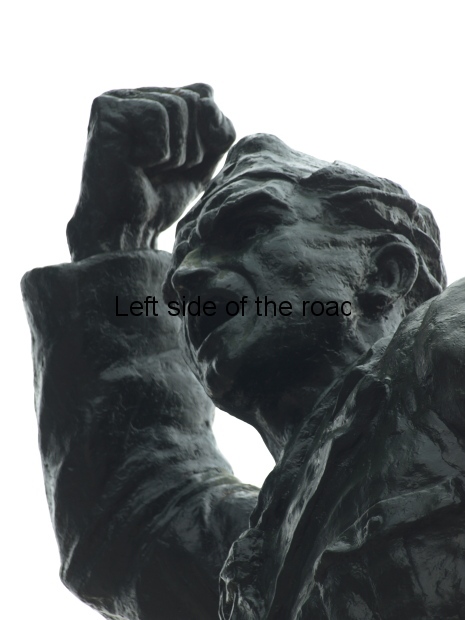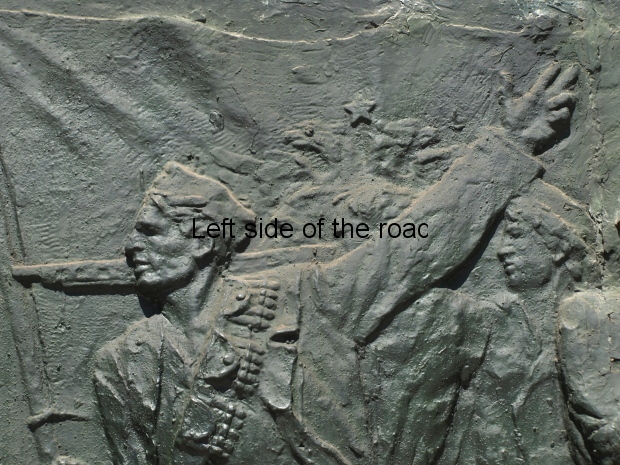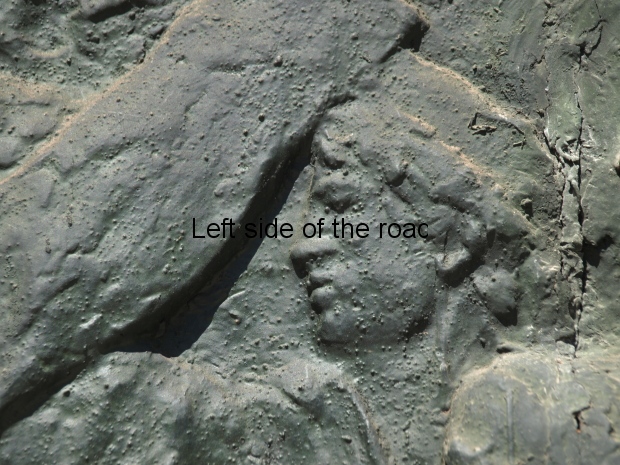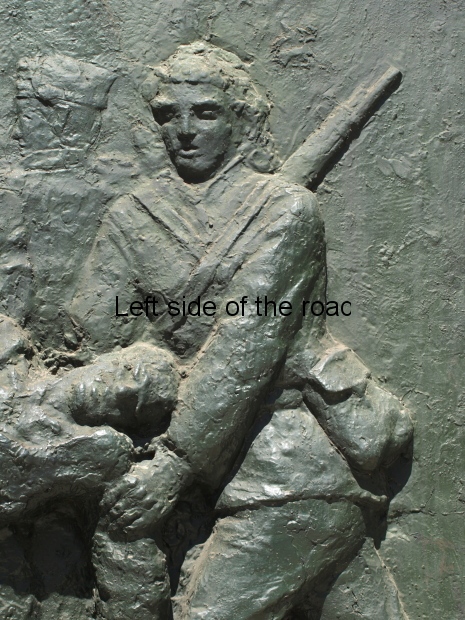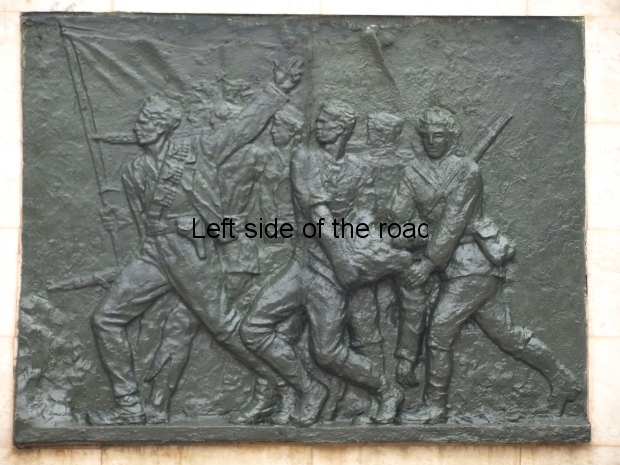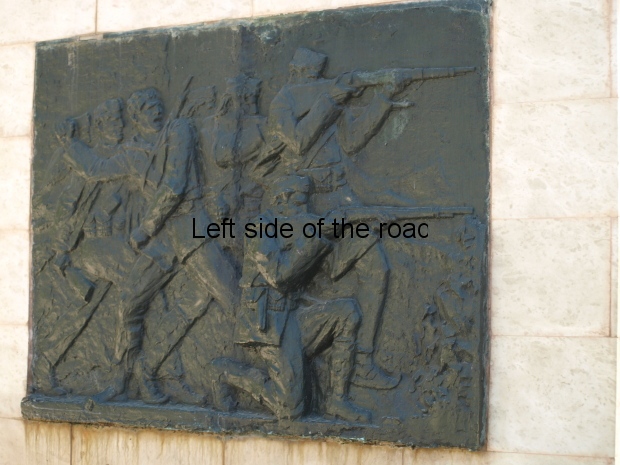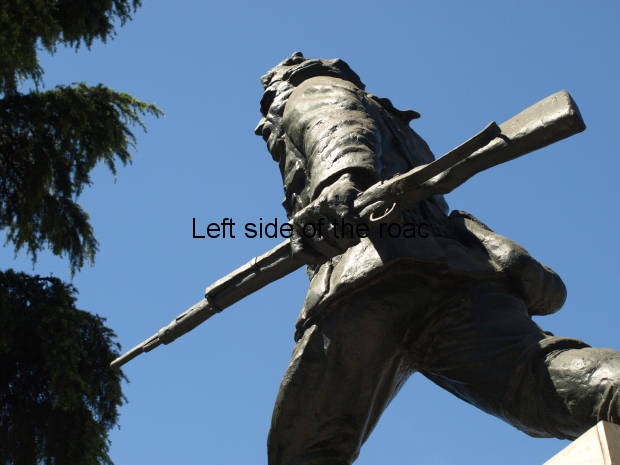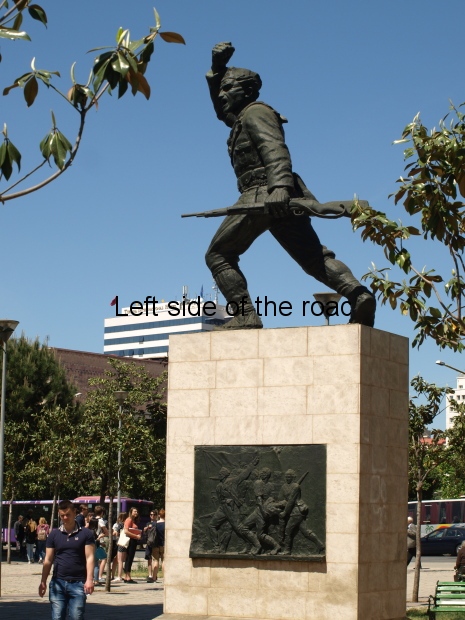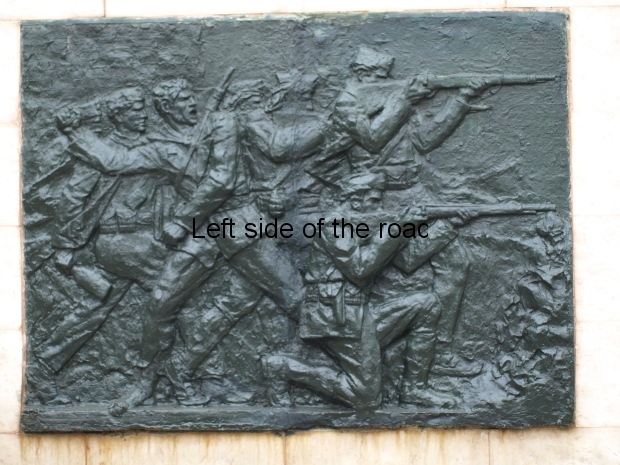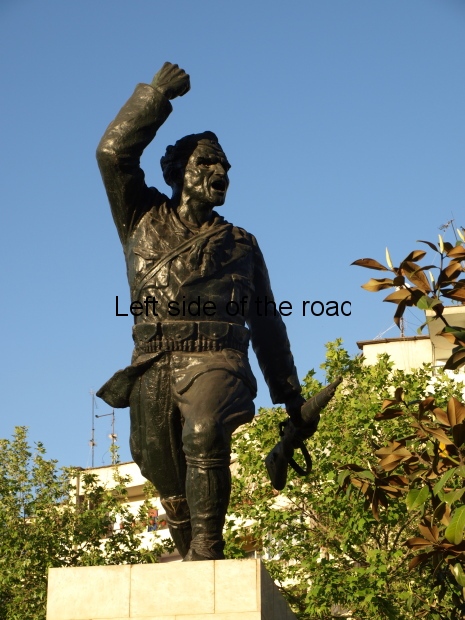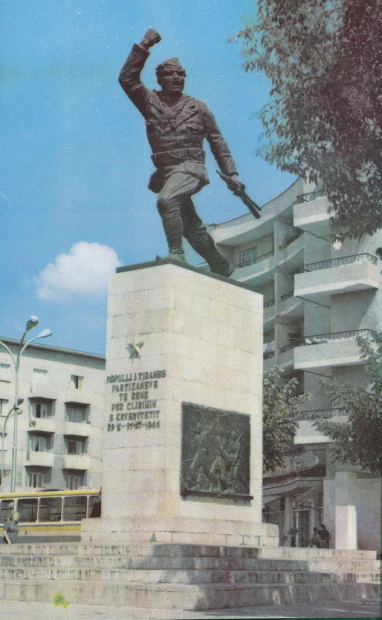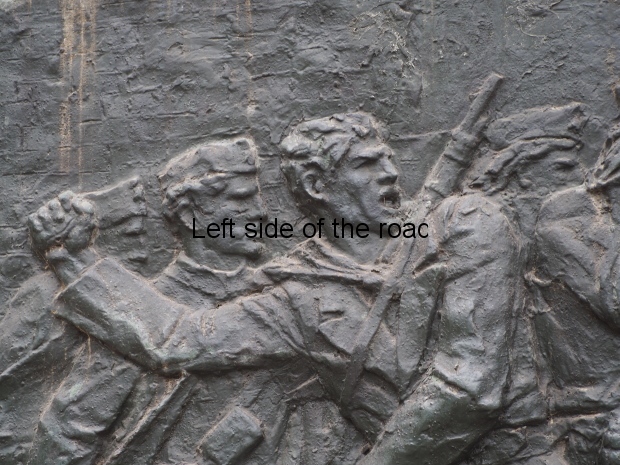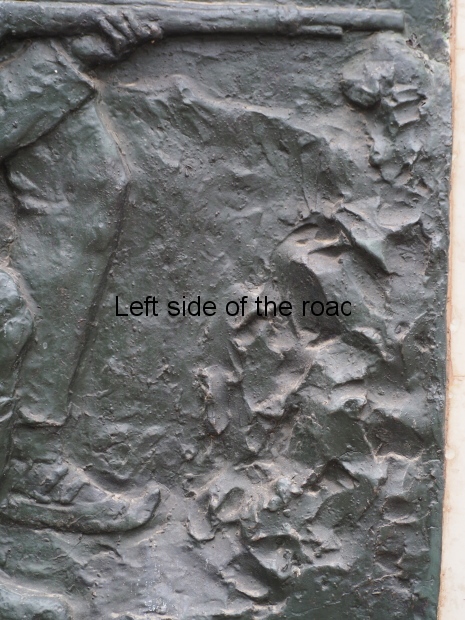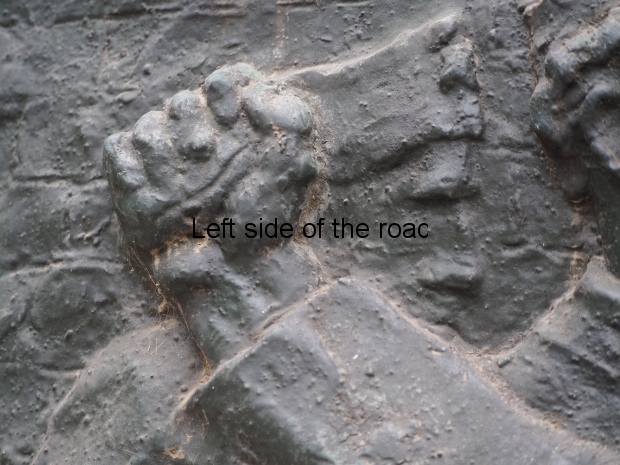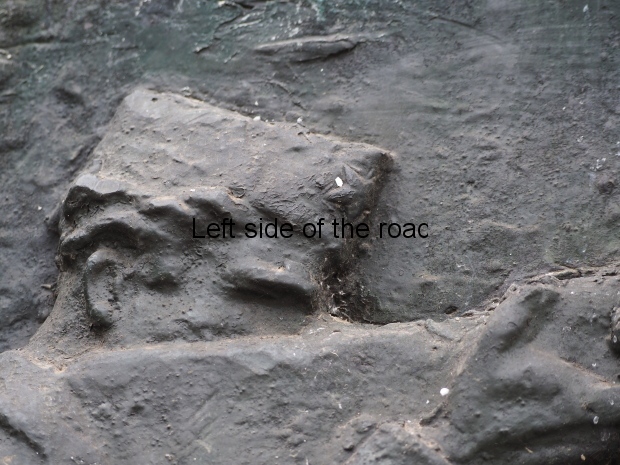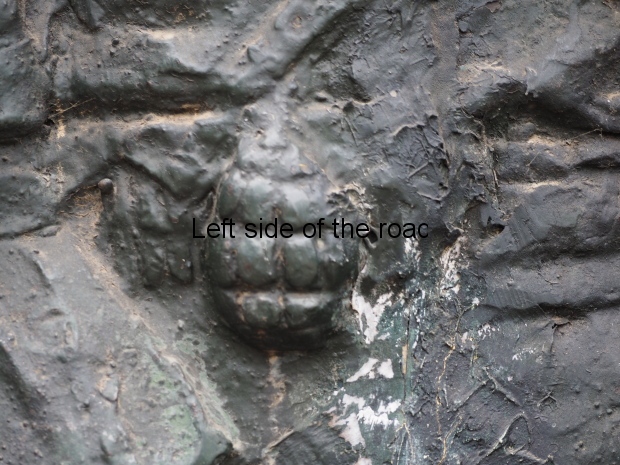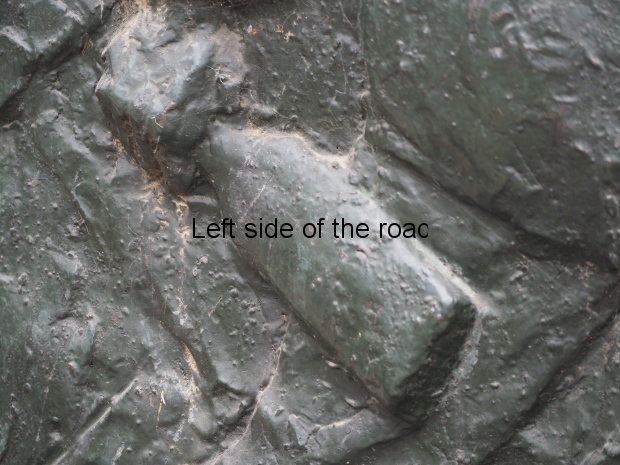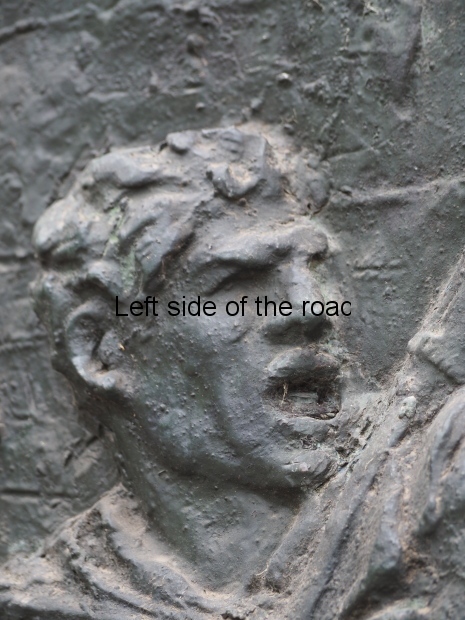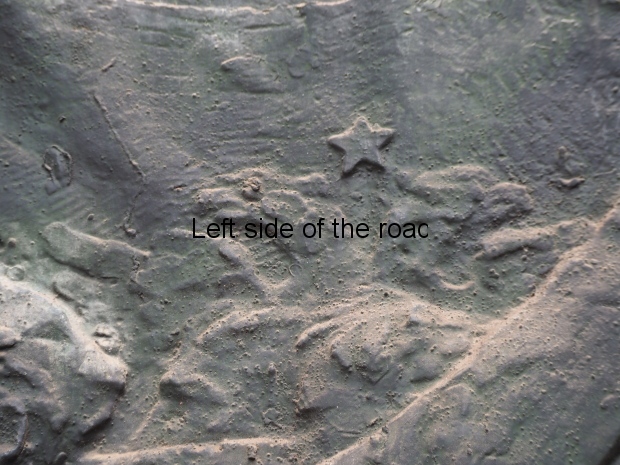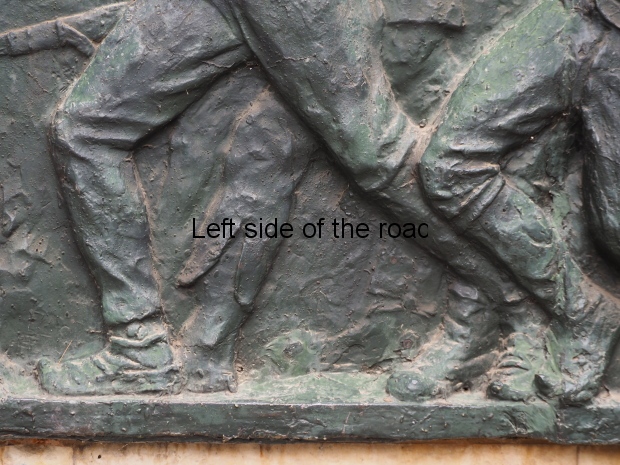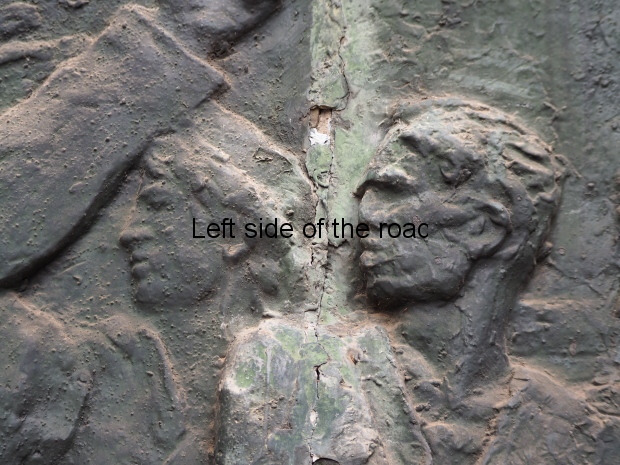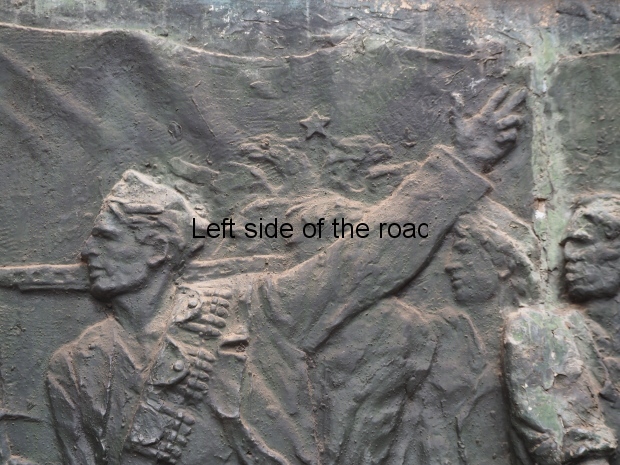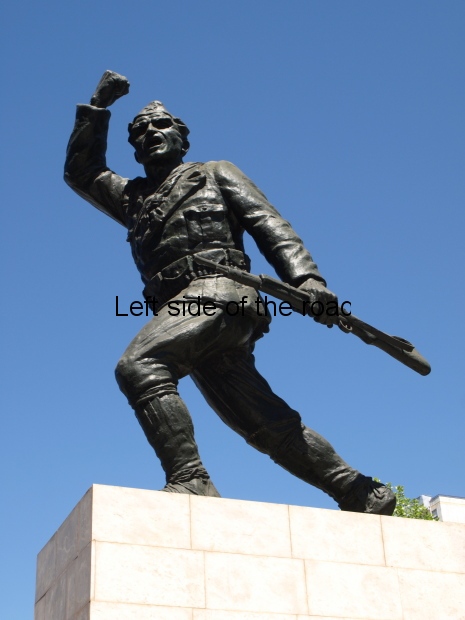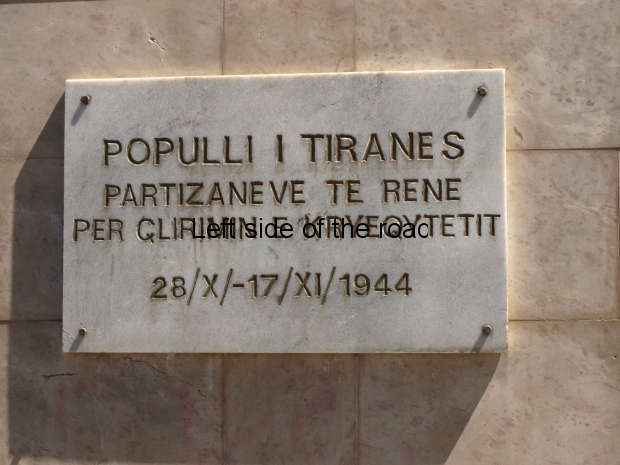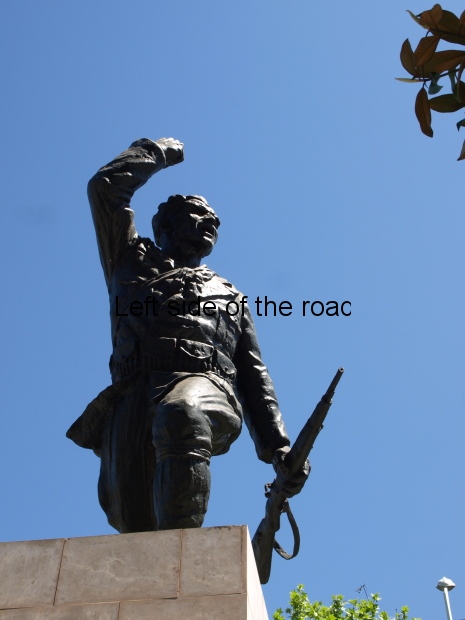
September 1942 – Lec Shkreli
Ukraine – what you’re not told
The more ‘humble’ Albanian lapidars
To date the majority of the lapidars that have appeared in this blog have been those which have had an artistic or architectural ‘merit’, that is they have been designed by those who have had training in their art and wanted to express meaning via the structure itself rather than have the reason for the monument written on an attached plaque.
However, this is not the basis of the vast majority of the lapidars identified in the almost 700 locations in the Albanian Lapidar Survey. As is described in Evolution of lapidars in Albania – part of the struggle of ideas along the road to Socialism the concept had a very humble beginning, often the simple marking of a grave of a fallen Partisan/s and as time, and prosperity, developed the grave taking on a focal point to celebrate important dates and the lapidar being made more elaborate over time. This story of the lapidars is shown in the short film ‘Lapidari’.
This means that probably more than two thirds of all the lapidars in the country were structures that could have been created by competent bricklayers and others in the building trade. But even in that style they would range from something akin (and the same size as) to a trig point on a mountain to something that comprised of a short wall to the side of which there would rise a pillar, or two. On the pillar would be attached a red star and to the wall a plaque with the names, dates and occasion the lapidar had been constructed at that particular place.
It was towards the latter part of the 1960s that sculptors, artists and architects started to really get involved in the construction of the lapidars. This was the occasion of Albania’s ‘Cultural Revolution’ and this lasted from, roughly, 1966 to 1986. At some time in the future I’ll try to put together a chronological table of the artistic lapidars to illustrate how they developed in both scale and complexity.
That doesn’t mean to say there weren’t public works of art, over and above the simple lapidars, before the 1960s. Andrea Mano’s Monument to the Partisan in Tirana was inaugurated in 1949. Odhise Paskali’s Shoket – Comrades was installed in Përmet Martyrs’ Cemetery in 1964. But both these sculptors were from the pre-liberation, pre-revolutionary era. Their approach was traditional, especially that of Paskali’s creation in Përmet which is very reminiscent of countless images of the deposition of the Christ from the cross to be seen in innumerable art galleries and Catholic churches throughout Europe.
It was only when the sculptors and artists, who had been trained by the likes of Mano and Paskali, reached their maturity as artists, together with the campaign of the Cultural Revolution (which was in essence a campaign to change the mentality of the Albanian workers and peasants) did a uniqueness, an innovativeness, appear in the public monuments that were created throughout the country. This was a twenty year period when sculptors such as Muntaz Dhrami, Hector Dule, Shaban Hadëri, Kristaq Rama and many others created their finest work.
BUT we should not forget the less ‘impressive’ structures that were in virtually every town and village (as well as in isolated locations in the countryside and mountains) in Albania as these were all monuments to the memory of those men and women who had fought against the fascist invaders from Italy and Germany and whose sacrifice made the Liberation of the county on 29th November 1944 at all possible.
On the other hand to talk about all of them would serve no purpose and would be very repetitive. Tragically, many of them have been either damaged by outright political vandalism or have just been allowed to lose the battle against the elements. For those interested in a particular lapidar or area of the country one or two images of all those listed in the Albanian Lapidar Survey can be seen in Volumes 2 and 3 produced at the conclusion of the project.
However, in order to give an idea of these simpler lapidars what follows is a description of those that still exist in Tirana. The fate, condition and respect given to these monuments in the capital is indicative of that in the rest of the country.
Perhaps one thing to stress here is that of the creators of these more ‘humble’ lapidars there is no record of who designed, created or constructed them.
To the victims of Fascism – Tirana market
The first one on the list you won’t be able to see. It existed up until 2016 when a new and very un-Albanian market was created on the site. In place of incorporating the lapidar into the design of the new structures the local/national governments sanctioned the demolition of the monument.

Victims of Fascism – 01
You couldn’t say that the lapidar (and those whom it commemorated) was being treated with a great deal of respect, as it would have been in the days of Socialist Albania, but it was being ‘tolerated’. It consisted of a pillar (about 4 metres high), which was wider at the top that at the bottom and from the lower part of the pillar, at 90 degrees to each other, there extended two short, low walls (again about 4 metres long).
This monument was meant to be seen from the outside of the space created by the walls as it was upon this front there were attached two marble plaques into which had been carved – and then painted in gold the following;

Victims of Fascism – 03
Më 22 tetor 1942 u var në litar Shyqyri Ishmi
meaning
On October 22, 1942, Shyqyri Ishmi was hanged
and

Victims of Fascism – 02
Më 29 shkurt 1944 u var në litar Muhamet Gjollesha
meaning
On February 29, 1944, Muhamet Gjollesha was hanged
This indicates that the reason for the lapidar to these victims of the Nazis being in this location was because they would have been hung in public, as was the norm of first the Italian and then the German fascists in an (in the Albanian context, failed) effort to intimidate the local population. This would seem to indicate that this space (just off what is now called Avni Rustemi Square), therefore, had long been a public market.
This is not exactly the monument that was first constructed here.

Victims of Fascism – 06
Notice here that the wording on the face of the walls is different from the more modern picture. Although it’s difficult to say from such a poor reproduction (the only I’ve so far been able to acquire) the lettering could well have been made up of individual bronze letters, inset into the concrete. When chaos and anarchy replaced the stability of Socialism in the 1990s anything that wasn’t nailed down, and often that which was, would be stolen by someone desperate enough to gain a few lek.
However, someone at some time in the intervening years had paid for and had had installed two simpler plaques to commemorate the two young people who had died at the hands of the Fascists. It had also been painted white (whereas the original seems to have been just the bare concrete) and the indented star at the top of the pillar – on two sides – had been painted red (the southern facing side slightly more faded than its northerly companion). This indicates that there was some sort of respect for the past. What changed to allow it to be demolished I don’t know.

Victims of Fascism – 04
But in its latter days it provided an anchor point for an electricity cable and a bit of shadow for the goods in the summer. If, as is obviously the case with this one, a lapidar had survived the chaos of the 90s it was more than likely just accepted as part of the environment, few caring especially of its significance but at the same time not doing any conscious damage.

Victims of Fascism – 05
The authorities saw an end to that.ast
Past location
GPS
41.33026198
19.82448704
Altitude
121.2m
Fighters who fell from the bullets of the Nazi occupiers
The next lapidar is a very simple affair, being a tall, narrow, truncated pyramid which commemorates those from the neighbourhood who died in a confrontation with the Nazis at the beginning of 1944.

Fallen fighting the Nazis – 03
On one of its faces there’s a large marble plaque bearing the date and the names of those who died in the battle.

Fallen fighting the Nazis – 02
The wording is;
Në shënje kujtimi luftëtarëve që ranë nga plumbat e pushtuesve naziste me 28 shkurt 1944. Gjergj A. Frashëri, Skënder A. Kosturi, Trajan S. Pekmezi, Viktor S. Gjokoreci
meaning
In memory of the fighters who fell from the bullets of the Nazi occupiers on February 28, 1944.
Gjergj A. Frashëri, Skënder A. Kosturi, Trajan S. Pekmezi, Viktor S. Gjokoreci
This looks like the original plaque. Now the letters are filled in with gold paint (not done very professionally) which I don’t think would have been the case originally.
The colouring of the stone work is ‘interesting’. Originally it would have been just the plain, unadorned concrete – or perhaps painted white. The present colouring is to go with the building beside it. Monuments to those killed in the struggle for national liberation from the fascists are now become colour co-ordinated to fit in with the chosen colour scheme of the bar beside which it stands.

Fallen fighting the Nazis – 01
It will be interesting to see if, in the future, the new (or present) bar owner decides on a different colour scheme the change will be applied to the lapidar as well.
Location
GPS
41.33455703
19.82600098
Altitude
122.9m
Place where Qemal Stafa was killed
Qemal Stafa was one of the founding members of the Albanian Communist Party (later to be called the Party of Labour of Albania) on 8th November 1941 and was the head of its Youth Section until his death, in this location, on 5th May 1942. After Liberation that date was chosen as Martyrs’ Day, to commemorate all those who had fallen in the War for National Liberation against the Italian and German fascists.

Qemal Stafa 03
This is a simple structure, with slight embellishments. It consists of a low wall (about 4 metres long) and on the left hand side two rectangular columns rise up to about the same height, that is about 4 metres. These columns are on either side of the wall and the one at the back is slightly taller. On the face of the wall is a plaque with the words;
Këtu më 5 maj 1942 me lufte me fashiste ra Heroi i Popullit Qemal Stafa
meaning
Here on May 5, 1942, during the anti-fascist war, the People’s Hero Qemal Stafa fell

Qemal Stafa 02
This is not original as there are signs that there had been other attachments, possibly individual letters, carrying the same message. This plaque is well made and the lettering, which has been coloured in gold paint, is done professionally.
Another point to make is that the whole structure was made of concrete and then faced, on all sides, by white marble. Apart from a missing piece at the top of the front column the monument is generally intact.
I would have thought that in the original design there would have been a red star attached somehow at the top of the columns. There’s no indication of anything being attached to the faces so it might have been a stand alone, metal star attached to the very top.
There’s a little bit of graffiti to the left of the plaque but there are no signs of any substantial damage.
Although originally this would have been standing alone, with little close by. Now it’s right in the middle of a large street market.
However, dying as he did before Liberation Stafa doesn’t have the same enemies as those who survived to fight for the construction of Socialism. There are a number of locations, including the main sports stadium (which was demolished in 2016 and I don’t know if a new one that had been proposed was eventually built, where it might be if built and what it might now be called) and a high school on the Durrës Road in Tirana that bear his name.
I think this element of respect which he still has in Albanian society accounts for the fact that even though getting close no street trader has the nerve to use the space in front of the actual monument (which isn’t the case in other locations I’ve visited in the country), prime though it might be.
Location
GPS
41.34165298
19.82614196
Altitude
106.8m
Monument to Mina Peze
‘Humble’ is not really an appropriate word to describe the lapidar to the honour of Mina Peza. Although not particularly large it’s different from virtually all other lapidars in the country. Unfortunately, I don’t have any information about when it was created as that would say a lot.
Unlike the other lapidars in this post the one in the street that still bears her name has obviously been designed. There are four distinct, component parts.
First it sits on a small platform that’s three steps up from street level. This platform and steps are all faced with red (steps) and cream (platform) marble. There’s a bit of careless damage to one corner of the steps but that’s about all.
Then there’s a tall, rectangular column, perhaps three metres high. This is faced in white marble. This stands separate from the rest of the monument, a metre or so in front.
Then we have a huge piece of stone where the rough edges are clear to seen but the top has been levelled off to take the final part of the structure which is a curved piece of concrete that has been faced with white speckled, red marble. Towards the top left corner of this curved marble a white marble plaque takes the place of the red slabs, thereby maintaining a smooth surface.
On this plaque are the words;
Këtu në 17 shtator 1942 u vra ne krye të demostratës së grave nëna patriote Mine Peza
which translates as
Here on September 17, 1942, the patriotic mother Mine Peza was killed at the head of the women’s demonstration
The stand-alone column has indications of some small holes towards the top and this is where a star might have been placed. (As I’ve written elsewhere the stars were the first target of the reactionary, counter-revolutionary hoards when the breakdown of order in the 1990s provided them with the opportunity to carry out their vandalism.) Also someone has painted a red and black (anarchist) sash from just below the base, diagonally, to just below the top. This has now faded somewhat.
This wouldn’t look out of place in a minimalist art collection, very much out of character to all other Albanian lapidars. But who designed it or when is still a mystery. It all feels very locked in now, there being bars and fast food outlets very close (there are a lot of bars and fast food places in Tirana). I assume originally it would have stood on the corner of the street with very little close by and with a much greater opportunity to appreciate the design.
The story of the demonstration
In the summer of 1942 the National Liberation Movement had assumed broad proportions. The prisons were full of patriots. To ease the situation, the fascists exiled some of them to the desolate islands of Italy. In conformity with the instructions of the Albanian Communist Party the secret anti-fascist organizations of the prisoners which operated inside the prisons organized protests and resistance to the fascist measures. Protests were held in February 1942, in the prison of Elbasan, in May and August in the prison of Tirana, and later, in Vlora. The biggest demonstration was the one held by the prisoners of Tirana, which took place in the afternoon of the 17th of September, 1942, just one day after the opening of the National Liberation Conference at Peza. This demonstration was of particular importance because it was coordinated with a demonstration held by the anti-fascist women of Tirana, in support of their imprisoned sons and brothers.
The events took place as follows: the prisoners refused to give up their comrades who were to be deported. Fighting with the carabinieri broke out in the prison. The prefect of Tirana was called to the scene. Meanwhile, about 100 women began a demonstration outside, in front of the prison. The fascists were in a critical situation. The order was given to break up the demonstration of the women by force. From their fortified posts, the guards opened fire on the women. Several were wounded, while one of them, the Heroine of the People, Mine Peza, was mortally wounded. Her comrades lifted her and carried her through the city streets. Mine Peza died while the demonstration was still going on. The people have dedicated a song to the heroism of Mine Peza and her comrades: Down with the terror, oust the occupier, we Mothers can no longer bear it! Let us smash the cruel iron bars!
New Albania, No 5, 1977
Location
On the corner of Rruga Mina Peze and Rruga e Bogdanëve.
GPS
41.331718
19.81121102
Altitude
99.3m
National Anti-Fascist Liberation War Headquarters
This is a squat, square monolith about 2 metres high sitting on a platform, twice as wide as the monolith, which is four steps up from pavement level. Each corner is inset to break the monotony of the square and at each changing angle there is a strip decoration of light brown marble. At the base there is the effect of three thin layers, the middle inset from the other two, which replicates the decoration of the sides of the block. On the left side of the platform there is a thin border with small, low, circular laurel bushes. At each end of this border there’s a small, low level light to illuminate the area at night.
On the side facing the road there’s a white marble plaque with the words;
Këtu ka qenë baza më e rëndësishme e L.A.N.Ç. (Lufta Antifashiste Nacional Çlirimtare) me emrin Baraka e Nushajve nga këtu jepeshin orientime për luftën e qarkut të Tiranës dhe mbarë vendit
which translates as
Here was located the L.A.N.C’s (National Anti-Fascist Liberation War) most important base by the name of Baraka i Nushajve. From here were sent out orders for the Tirana district and the whole country
This plaque looks original and although there are some marks on the marble it is in a generally good condition.
This is a strange one in that although given its own space it is so hemmed in with the surrounding trees (much more substantial than when the lapidar was erected) it seems to be made invisible, especially in the day time when I’m sure that many people pass by without even knowing it’s there.
Location
In Rruga Sami Freshëri, just a short distance on the Lana River side from the new police station.
GPS
41.32364597
19.81337003
DMS
41° 19′ 25.1255” N
19° 48′ 48.1321” E
Altitude
111.5m




















